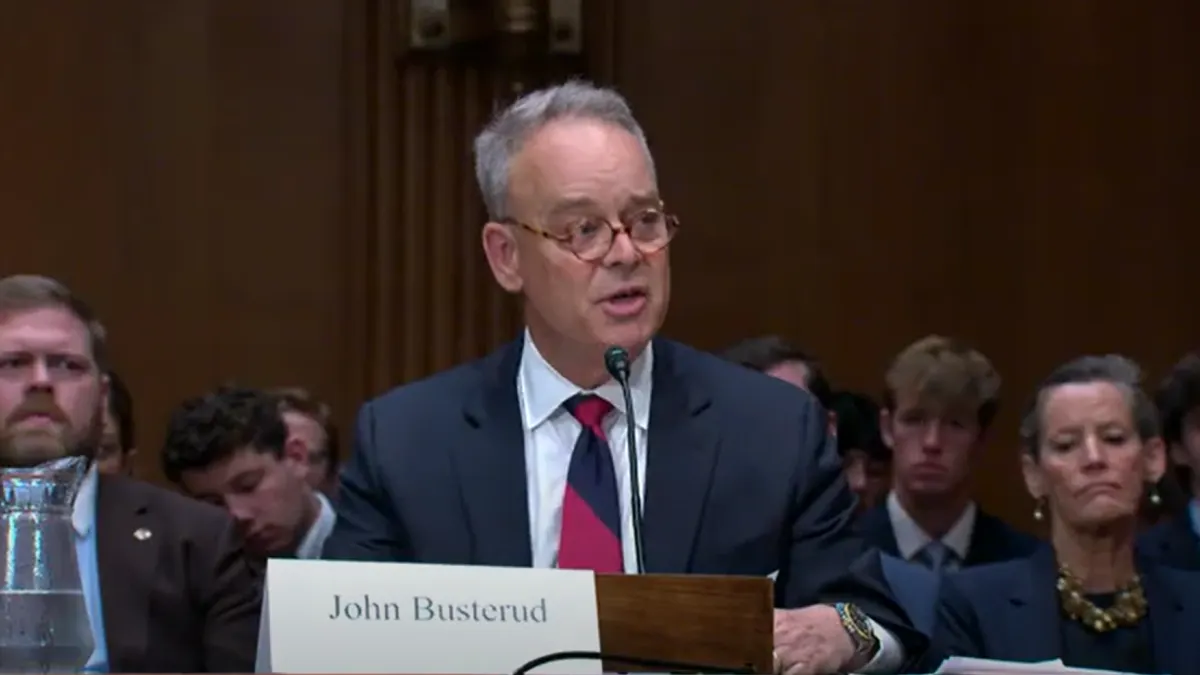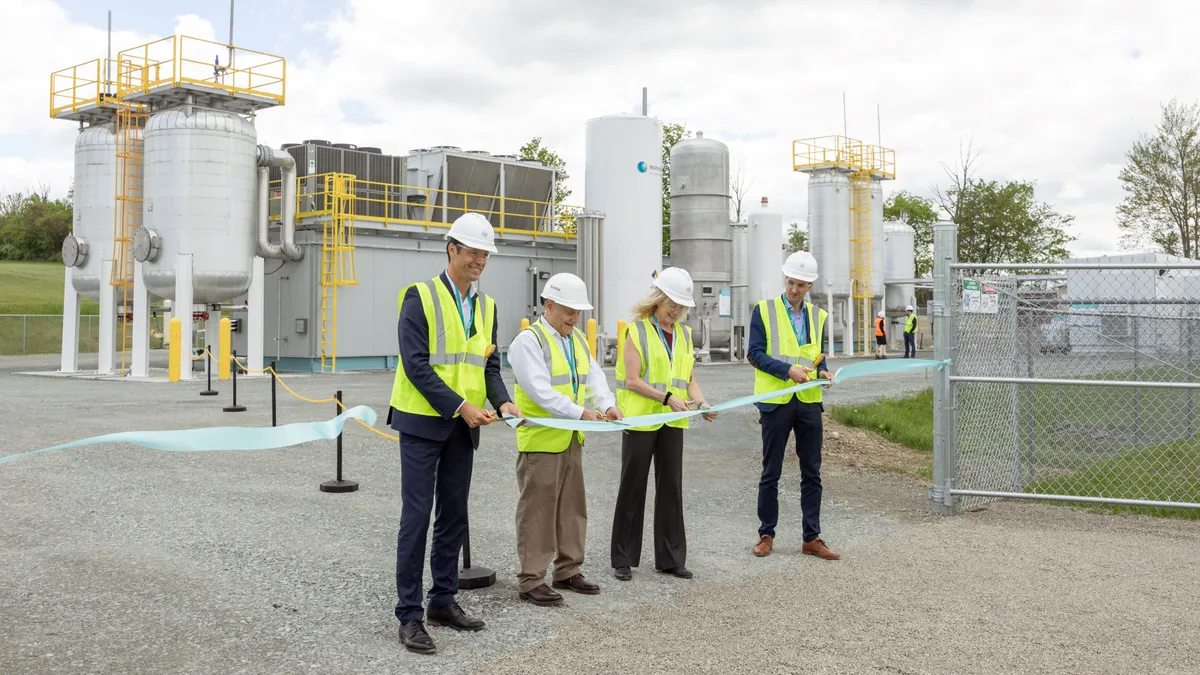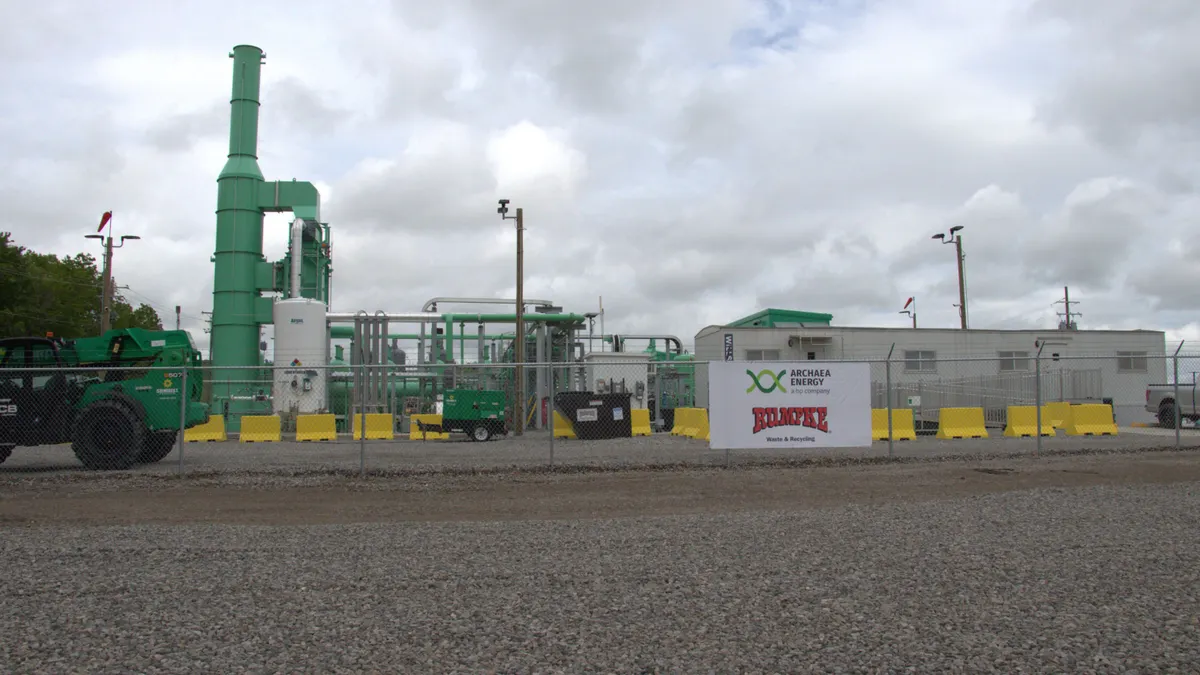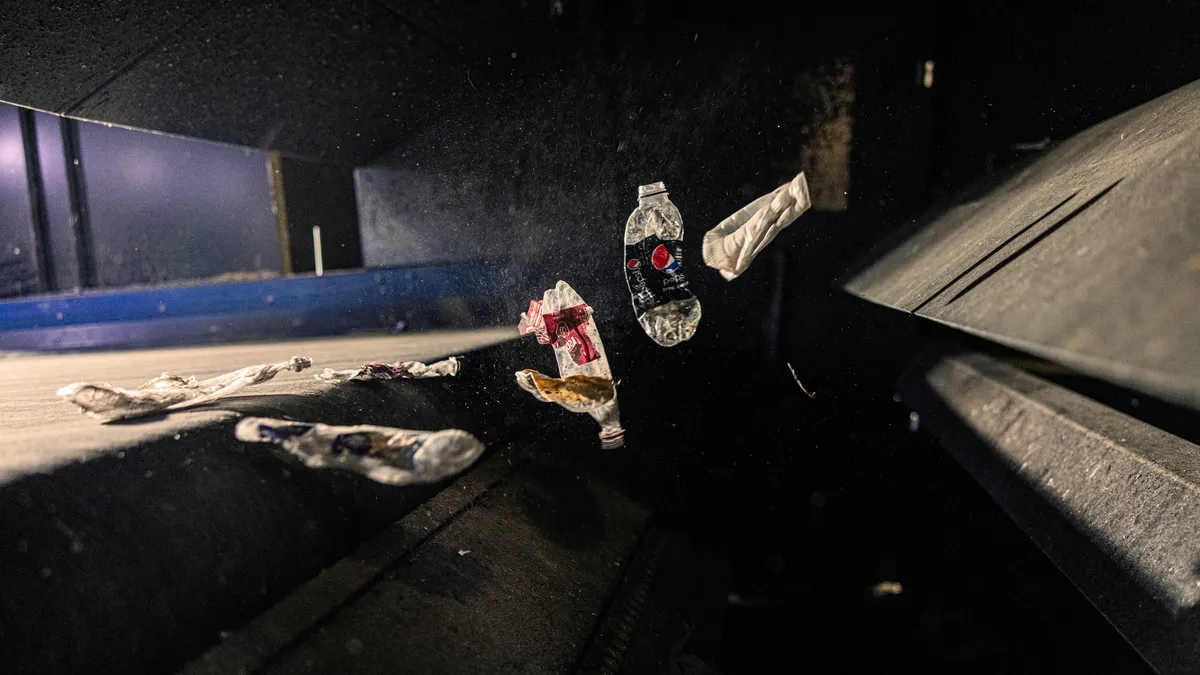As of June, there are 634 operational landfill gas projects in the U.S., according to the United States Environmental Protection Agency Landfill Methane Outreach Project (LMOP). Those projects are collecting gas to use directly (in an on-site boiler, for example), to generate electricity or to be converted to pipeline-quality methane, commonly referred to as compressed natural gas (CNG).
Since establishing as a voluntary program in 1994, LMOP has worked to educate landfill operators on the benefits of capturing and utilizing landfill gas, and to bring together stakeholders for conversations and information sharing.
At this week's WASTECON event in Baltimore, LMOP team member Kirsten Cappel reviewed three landfill gas (LFG) trends that the EPA has noticed from the data it has collected and the conversations that team members have had.
Trend 1: Declining projects, changing yields
According to Cappel, the overall number of new landfill gas projects peaked in 2009 at 57 projects. In 2016, she said, there were just 10 new landfill gas projects.
In that same time, the growing number of LFG projects has lead to an increase in the total amount of electricity generated from the projects. In 2009, the projects had a combined output of about 1,200 megawatts (MW); in 2016, that number had increased to 2,100 MW.
Additionally, the main way that captured gas is being utilized has changed. The amount of landfill gas that's been used directly has decreased. Even more than generating electricity from LFG projects, converting the captured gas to CNG has taken off. According to Cappel, the amount of landfill gas that's captured and converted to be pipeline ready has increased 160% in the last 10 years.
These trends are largely explained by market and social forces. The low cost of natural gas in the U.S. has competed with direct-use landfill gas, though this trend isn't new. In addition to concerns over permitting, high initial costs, and low electricity buy-back costs, concerns over feedstock for generating landfill gas may be part of why the number of new projects is slowing.
"If they're located in an area where a city, or other local authority is collecting organic waste, separately from MSW that's landfilled, future generation of landfill gas can be a potential concern," she said.
Trend 2: Rising interest in vehicle fuel
More and more, municipalities and corporations are becoming interested in using renewable natural gas, instead of diesel, to operate their trucks. Increasingly, this natural gas can come from converted landfill gas. Federal incentives like RINs, credits which are purchased by obligated parties under the Renewable Fuel Standard, are making investing in natural gas from landfill gas more profitable. In addition to economic incentives, there are larger social drivers pushing interest in natural gas as fuel.
"[The] shift in diesel-based fleets to natural gas fleets is driven by corporate sustainability goals, municipal sustainability goals and county mandates for local waste haulers," Cappel said. Natural gas burns much cleaner than diesel and create fewer tailpipe emissions. Additionally, natural gas is increasingly cheaper at the pump than diesel is.
Trend 3: Interest in organics
Unlike the first two, this trend could be antagonizing to landfill gas generation efforts.
"There's definitely an emerging and sustained interest by states, municipalities, NGOs and others to recover and divert food waste from landfills," Cappel said.
While there's still an ongoing debate over how to best process food waste, what's not up for debate is that organic matter has the highest methane generating potential of any type of waste. With increased interest in making use of the volume of food waste, there are more efforts to keep food waste out of landfills.
Keeping food scrap out of landfills will free up valuable airspace and lead to less leachate generation. However, it also lowers the amount of gas produced, which could lead to less profitable yields for landfill gas capture projects. Because there's a growing legislative interest in reducing food waste and hitting zero-waste goals, more food scrap may be diverted from landfills — which would, in turn, mean less methane produced from landfills.
Takeaways
These factors must all be considered when launching or investing in a new landfill gas operation — or expanding existing operations. Corporate interest in natural gas vehicles coupled with government requirements to switch off of diesel will almost certainly continue to push haulers and collectors away from traditional fuel sources.
While it makes sense for large companies to create CNG on landfills that they operate, it may be hard to find other customers for landfill gas converted to CNG, because renewable gas is so cheap in the U.S. Additionally, as more food waste is diverted from landfills for composting or anaerobic digestion, landfill gas operations will see smaller yields.


















